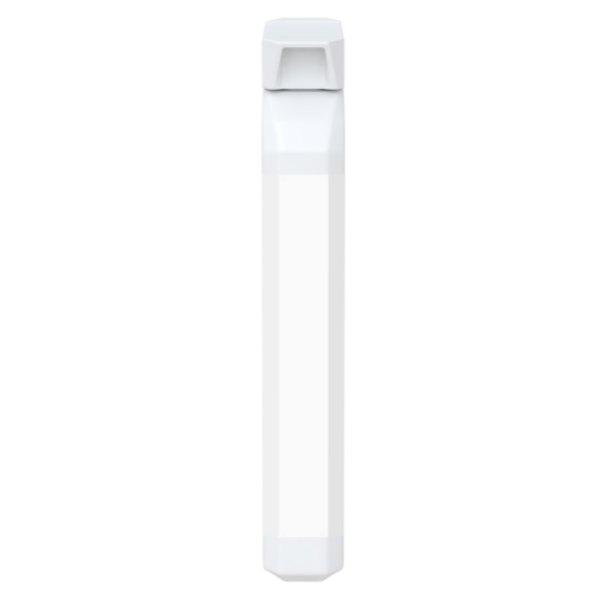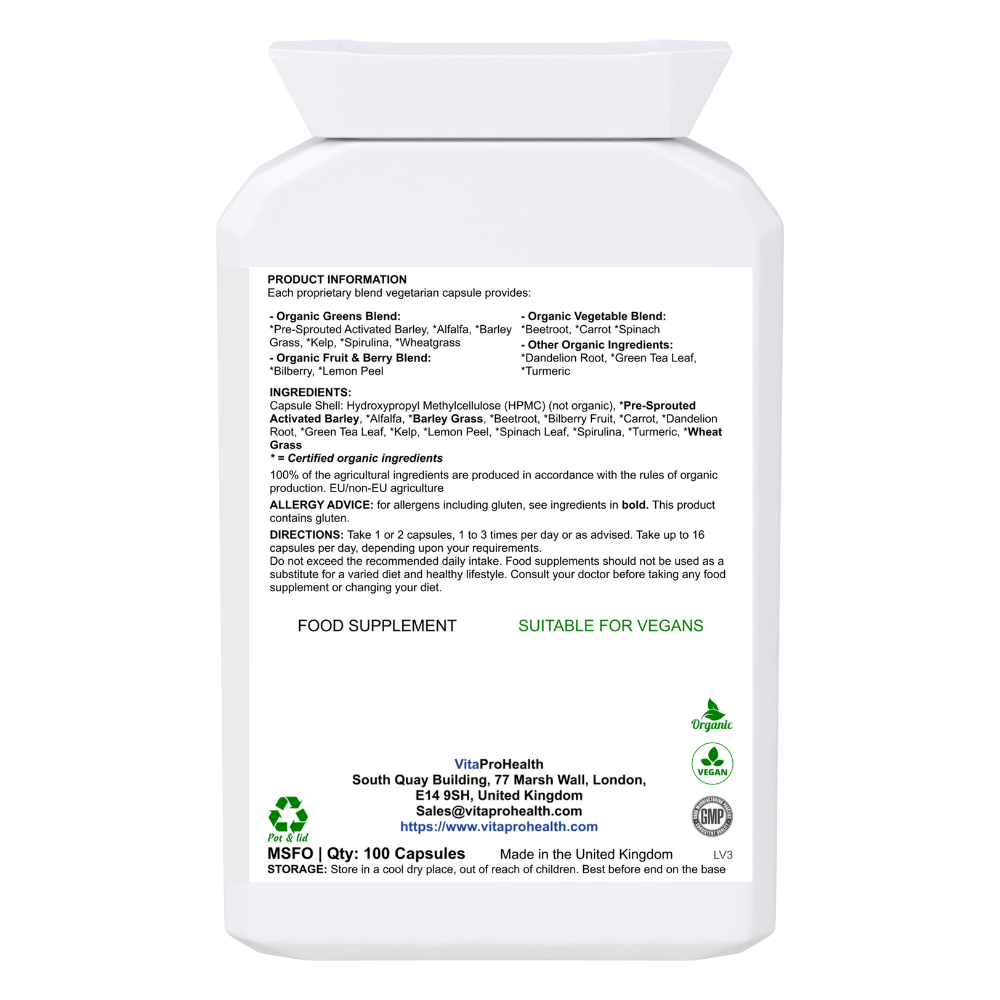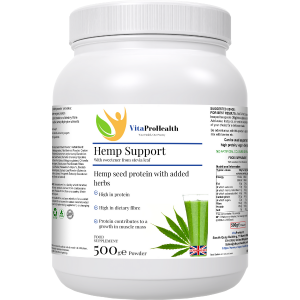Description
Barley grass:
Barley grass is the leaf portion of the barley plant. It is a source of dietary fibre, organic sodium, vitamins (such as beta carotene, vitamins B1, B2, B6, C, folic acid and pantothenic acid), minerals (such as potassium, calcium, magnesium, iron, copper, zinc, phosphorus and manganese), amino acids, enzymes (such as superoxide dismutase (SOD)) and phytonutrients (such as chlorophyll).
Beetroot:
Beetroot is the taproot portion of the beet plant. It is one of several of the cultivated varieties of Beta vulgaris grown for their edible taproots and their leaves (called beet greens). It is a source of dietary fibre, folate (vitamin B9), manganese, potassium, iron and vitamin C. The deep red colour of beetroot results from the presence of a type of betalain pigment (betacyanins). Beetroot is also a source of betaine and inorganic nitrates.
Bilberry fruit:
The bilberry (Vaccinium myrtillus) is a round, flat-topped, tiny fruit that grows in the wild, and is seldom cultivated. The berries grow profusely on small, wiry shrubs, mainly on high ground in the north and west of the British Isles. Due to its small size and blue colour, it is often mistaken for a blueberry, but it actually tastes quite different.
Carrot:
The carrot (Daucus carota) is a root vegetable, which is often under-rated in terms of its nutritional content. Carrots are a particularly good source of vitamin A (from beta-carotene), dietary fibre, potassium, biotin, vitamin K (phylloquinone) and vitamin B6.
Dandelion root:
The roots of the dandelion plant contain a complex carbohydrate called inulin, as well as vitamins (including A, B complex, C and D), minerals (including zinc, calcium, iron and potassium) and compounds called sesquiterpene lactones.
Green tea leaf:
Camellia thea, or green tea, is a source of catechin polyphenols – Epigallocatechin gallate (EGCG), in particular.
Kelp:
Kelp is a large edible seaweed (algae), which grows in underwater “forests” in shallow oceans. It contains vitamins (such as A, B1, B2, C, D and E), minerals (such as iodine, vanadium, zinc, magnesium, iron, potassium, copper and calcium), enzymes (haloperoxidases), amino acids (including tryptophan, threonine, isoleucine, methionine, cysteine and valine) and chlorophyll.
Iodine contributes to: normal cognitive function, normal energy-yielding metabolism, normal functioning of the nervous system, the maintenance of normal skin, the normal production of thyroid hormones and normal thyroid function, as well as to the normal growth of children. Lemon peel:
Lemon peel contains pectin, fibre, calcium, potassium and vitamin C, as well as citrus bio-flavonoids.
Spinach leaf:
Spinach (Spinacia oleracea) is an edible flowering plant in the family Amaranthaceae native to central and western Asia. It contains vitamins A, B2, B6, B9 C, E and K, lutein, magnesium, manganese, folate, betaine, iron, calcium, potassium, folic acid, copper, protein, phosphorus, zinc, niacin, selenium and Omega 3 oils. More recently, opioid peptides called rubiscolins have also been found in spinach.
Spirulina:
Spirulina is a blue-green microalgae. It contains between 55 and 70% protein (more than beef, chicken, and soybeans), 8 essential and 10 non-essential amino acids, as well as gamma-linolenic acid (GLA), beta-carotene, linoleic acid, arachidonic acid, vitamin K, pantothenic acid, magnesium, potassium, thiamin, riboflavin, niacin, iron, copper, manganese, nucleic acids RNA and DNA, chlorophyll and phycocyanin (a pigment-protein complex that is found only in blue-green algae).
Turmeric:
Turmeric (Curcuma longa) is a rhizomatous herbaceous perennial plant of the ginger family, Zingiberaceae. It is a spice which contains dietary fibre, volatile oil, vitamins (such as vitamin C and vitamin B6), minerals (such as potassium, calcium, iron and magnesium) and the yellow pigment, curcumin.
Wheatgrass:
The crop from germinated seed of wheat grains, wheatgrass is a source of chlorophyll, plant protein, enzymes (including superoxide dismutase (SOD)), vitamins (including vitamins A, C, K, E and all the B vitamins) and trace minerals (including iron, phosphate, boron, copper, selenium, sodium, calcium, magnesium, potassium, chromium, manganese and zinc).
High blood sugar
Our Routine Vita Veg Capsules contains alfalfa which has the ability to help maintain your sugar blood levels, keeping them low. Spirulina is another ingredient in our capsules that helps treat diabetes not only lowering sugar blood levels but also known to increase energy level which will combat tiredness.





















Reviews
There are no reviews yet.